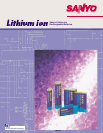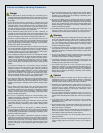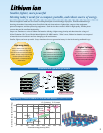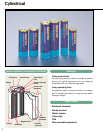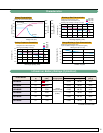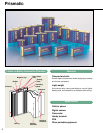
2
Smaller, lighter, more powerful
Meeting today’s needs for a compact, portable, and robust source of energy.
Devices designed to make our lives easier are being developed at an increasingly rapid pace. With the multimedia age
dawning, the market is becoming more diversified with such innovations as lightweight, compact video equipment,
personal computers, and data-processing equipments. Such devices have created a need for high-quality, reliable power
sources that provide excellent functionality.
Sanyo now introduces a series of lithium-ion batteries offering a higher energy density and three times the voltage of
Nickel-Cadmium (Ni-Cd) and Nickel-Metal-Hydride (Ni-MH) batteries. What’s more, lithium-ion batteries are composed
of materials that are both safer and less damaging to the environment.
Smaller, lighter, and more powerful. Sanyo introduces the new generation battery for the forth-coming multimedia age.
Positive electrode
Charge
Negative electrode
Discharge
Structure and operation principle
Higher energy density
Lithium-ion batteries provide a higher energy
density per unit volume and unit weight than
nickel-cadmium and nickel-metal-hydride batteries.
In addition, their higher voltage and lighten weight
contribute significantly to the downsizing,
weight reduction, and simplified operation of
electronic devices.
Built for safety
With certifications such as UL 1642
(safety standard for lithium batteries),
Sanyo Lithium-ion batteries ensure
safety in operation.
Higher Voltage
Our lithium-ion batteries are capable
of generating an amazing 3.7V per
cell — so only one-third the number of
batteries is required compared to
conventional nickel-cadmium and
nickel-metal-hydride batteries.
Energy density of lithium-ion batteries vs. Ni-Cd and Ni-MH batteries
(Sanyo Battery Comparison)
Volumetric energy density (Wh/l)
*Cell basis
*C: Cylindrical P: Prismatic
Gravimetric energy density (Wh/kg)
500
0
50
100
150
100 150 200 250 300 350 400
Ni-Cd(C)
Li-ion(P)
Li-ion(C)
Li-ion(P)AI can
Li-ion Premium(P)AI can
Ni-MH(P)
Ni-MH(C)
Ni-Cd(P)
Li-ion Premium(C)



